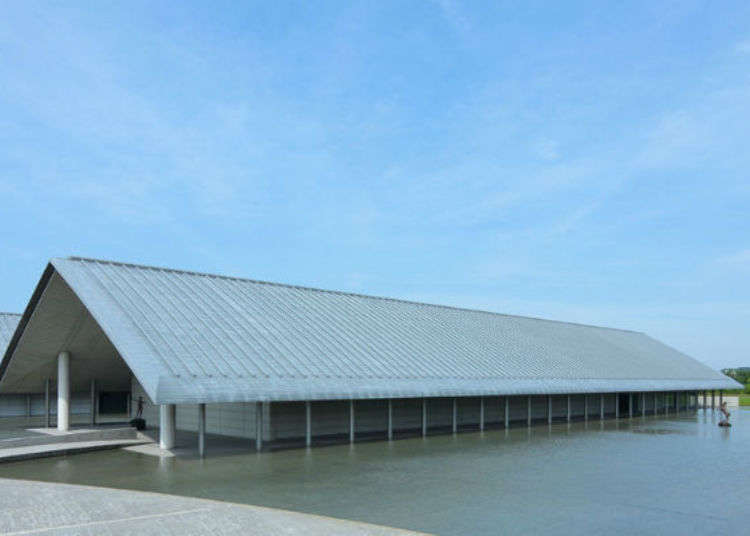
Located near Lake Biwa in Moriyama City, Sagawa Art Museum is an impressive cultural facility that has a modern and cool appearance in which nature harmonizes with architecture. Of course, their art collection is filled with the finest domestic works of art. Let’s check it out!
- Table of Contents
-
- 20th Anniversary in 2018. A Luxurious Collection of the Best from the Japanese Art World
- Beautiful Harmony of the Modern Architecture and Natural Scenery of Omi
- You Can Touch Works by the Masters!? Immersed in the Amazing Collections
- What! A Tea Room Under Water!? Surprised by the Unconventional Tea Room
- An Art Spot that Touches the Senses of the Visitors by Combining Architecture, Nature and Art as One
20th Anniversary in 2018. A Luxurious Collection of the Best from the Japanese Art World
Sagawa Art Museum is set near Japan’s largest lake, Biwako. As a part of the 40th anniversary commemorative project for Sagawa Express, a major transportation company, it was opened in 1998.
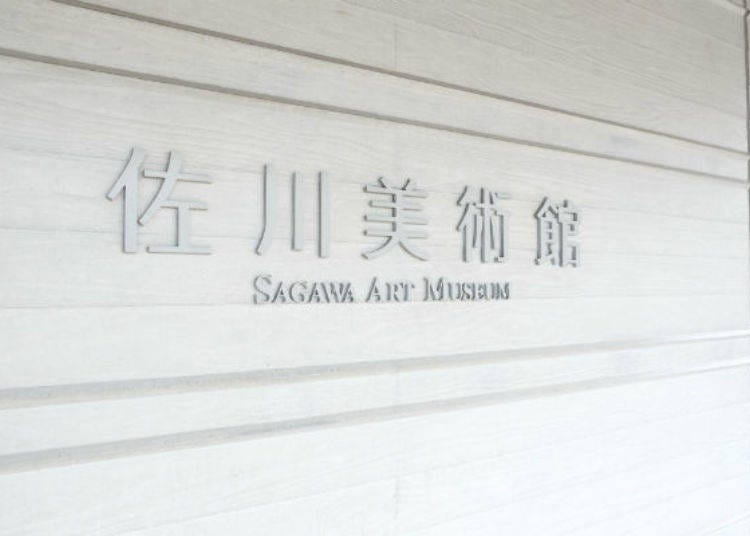
Here they have a collection of the three masters representing the Japanese art world: Nihonga painter Ikuo Hirayama, sculptor Churyo Sato, and potter Kichizaemon Raku.
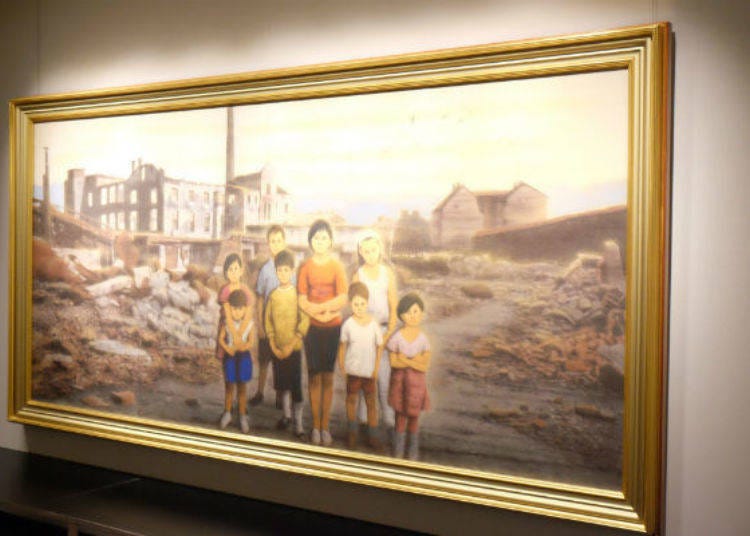
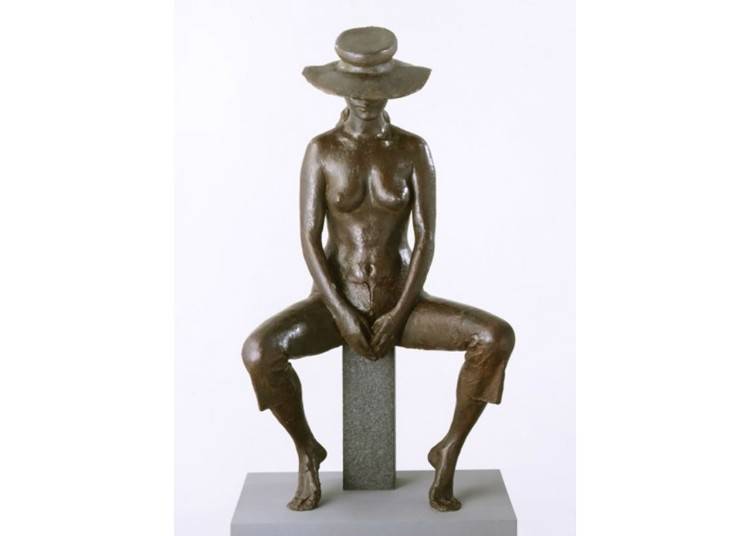
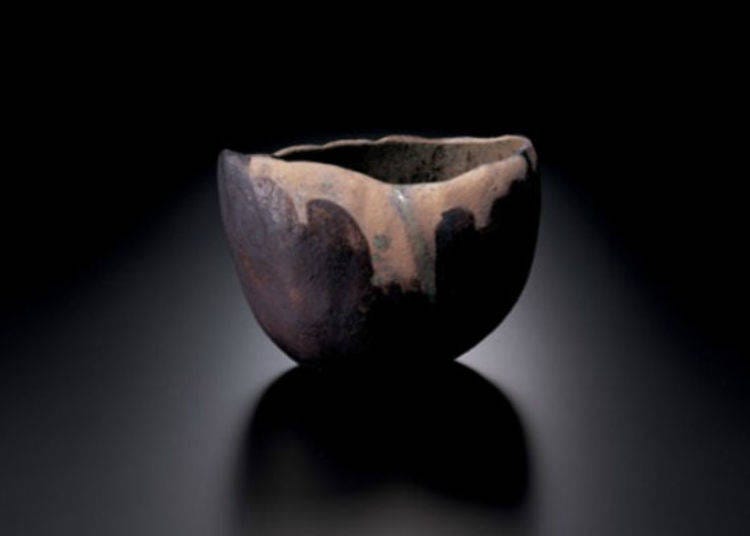
The museum has a collection of over 350 items from Mr. Hirayama including rough sketches! The museum has the largest collection scale in Japan. With many work, they change the exhibit theme depending on the season and hold special exhibits.
Beautiful Harmony of the Modern Architecture and Natural Scenery of Omi
The Sagawa Art Museum stands on a large site, and the scale of it all can be felt even before entering the museum. Once you pass through the entrance gate, the water garden and main building is to the front. The scale of the structure is quite amazing. In addition, the inorganic, almost monotonic, structure yields a modern impression.
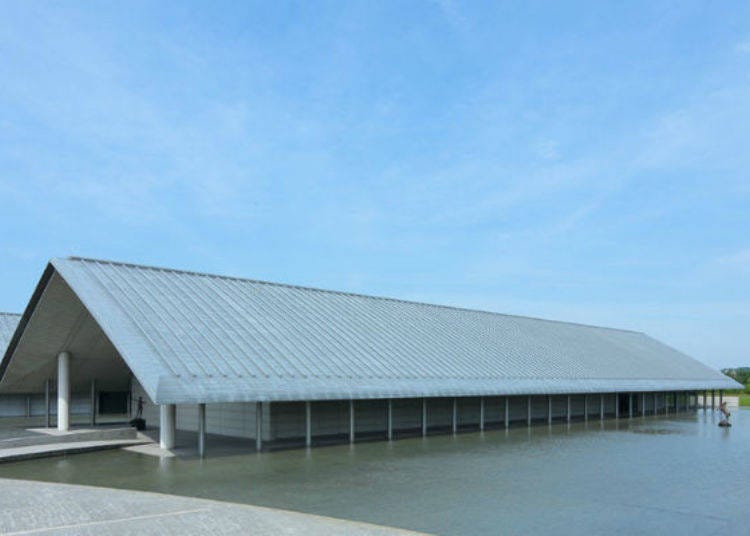
If you look only at the building, it may seem a bit dull. But given its Mise-en-scène—open blue sky; undulating water at the foot of the building; and the plants in the water garden—it all looks like a unifying visual where nature and building creates a harmony.
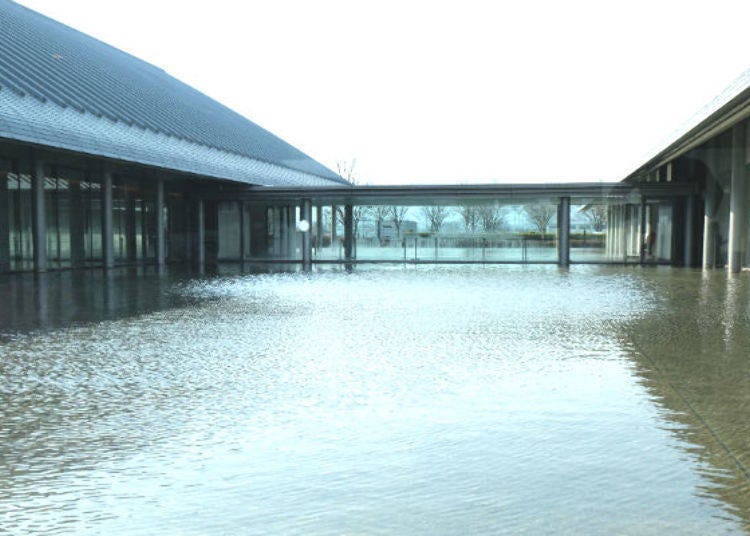
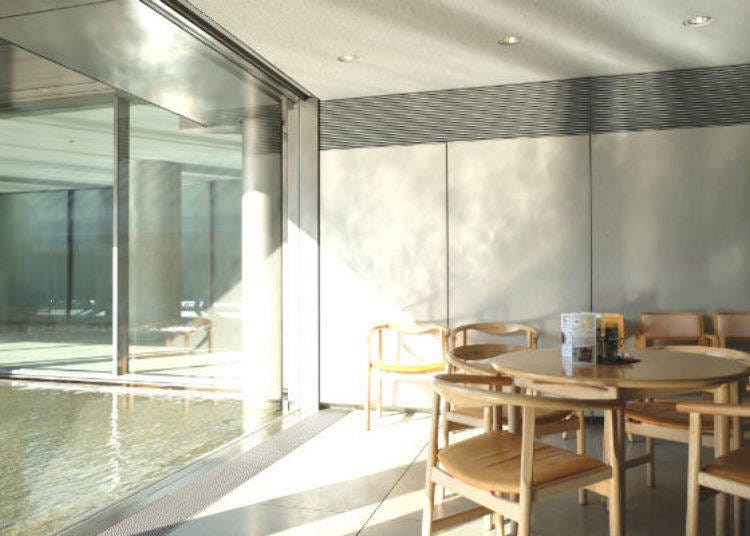
This section of the art museum is located on the shore of Lake Biwa and breezes whip directly from the lake. Each time a zephyr blows over the water garden, it creates a ripple and the sunlight reflects from the waves. It’s a wonderful sight that includes shapeless wind and light.
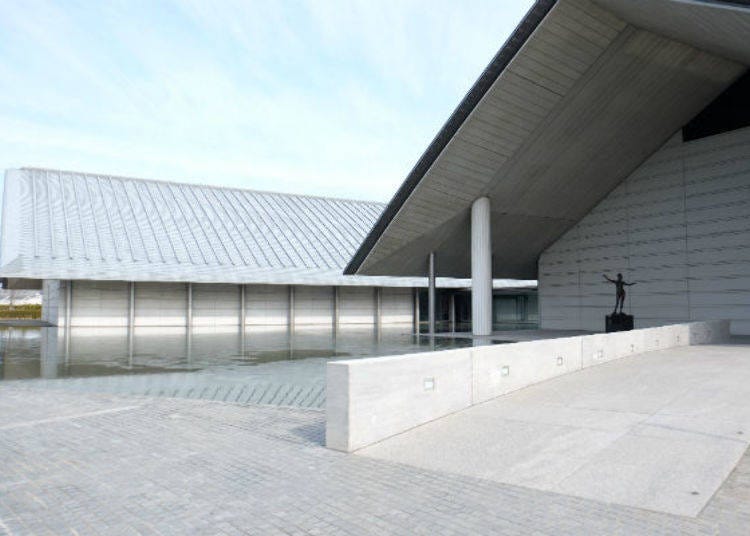
The architectural beauty that matches the scenery has gained a solid reputation and at the Architectural Institute of Japan Awards, the Sagawa Art Museum received the most prestigious award in the domestic architecture field, the Year 2000 Work Selection Award. The museum has received various other awards and the photogenic beauty recognized by experts is a must-see.
You Can Touch Works by the Masters!? Immersed in the Amazing Collections
Now let’s head in the museum. As we mentioned before the museum has art pieces from three masters and each gallery is named after each, with corresponding works.
This time we received special permission to take pictures under the guidance of curator Sakiko Matsuyama.
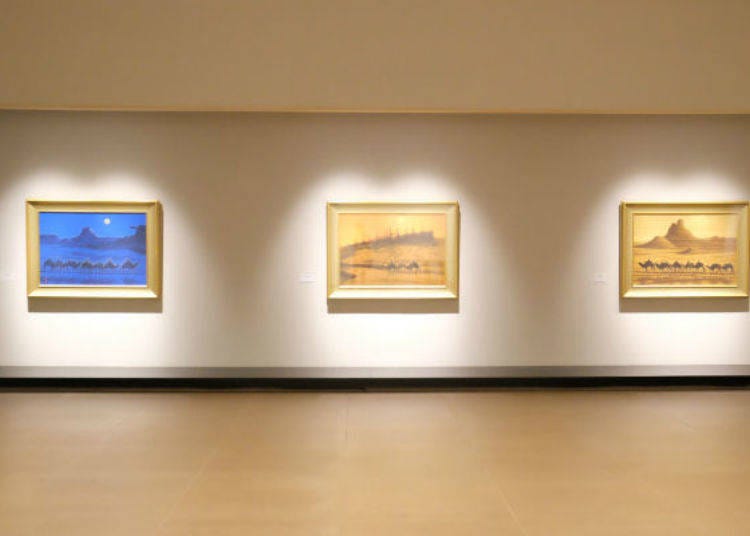
Hirayma’s exhibition room, has a spacious ceiling that provides a great open feeling! Warm lights gently illuminate the pieces, causing Hirayama’s work to stand out more. According to Ms. Matsuyama, “Since Mr. Hirayama has many pieces that are big, we created a large environment to display pieces with more space in-between.”
The exhibition room has benches to sit and get fully immersed by the artist’s world.
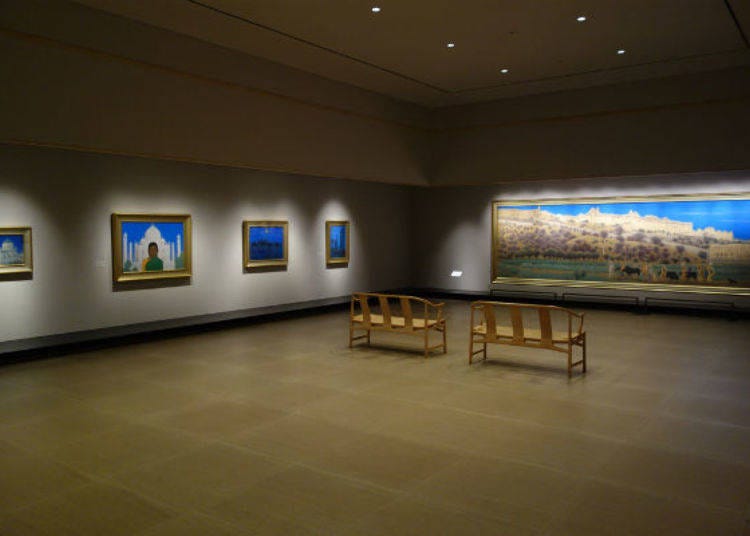
Next is Mr. Sato’s exhibition room, with the bronze statues. Make sure to look at the statue from all directions. Also in this area you can actually touch the artwork! Normally most art museums prohibit such action to preserve the pieces, but these bronze statues are permitted. By touching the statues you are able to directly feel the smoothness and minute details.
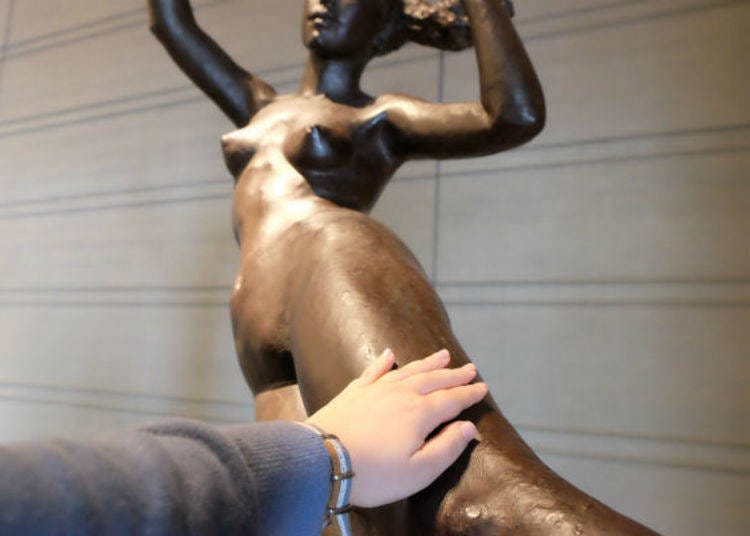
And to the third master, Mr. Raku’s exhibit. His works are at the Raku Kichizaemon Wing which was built in 2007 for the 10th anniversary of the art museum. Mr. Raku himself created the design and supervised the wing’s construction. This is the only place in the world where you can view Raku’s artwork in a structure that was designed by him. It was made under the concept of Shuhari, which is a teaching method in Japanese tea ceremony to “Protect the teaching, develop it, and create something new.”
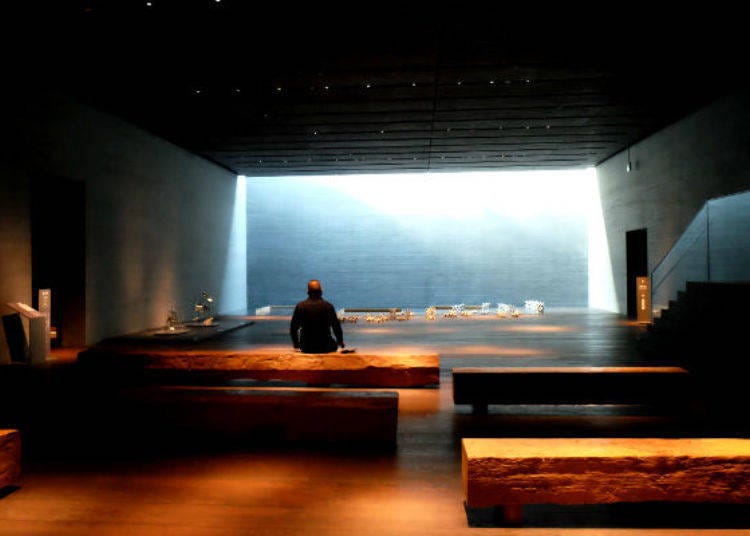
The exhibition room is right beneath the water garden. The lighting in the exhibit is dim, bold, and feels like you are in the ground. Meanwhile, part of the glass ceiling creates a very dramatic space by allowing in the shadows from moving water. The light shimmering in the dimness creates a very comfortable feeling and it seems like many people enjoy taking their time in this area.
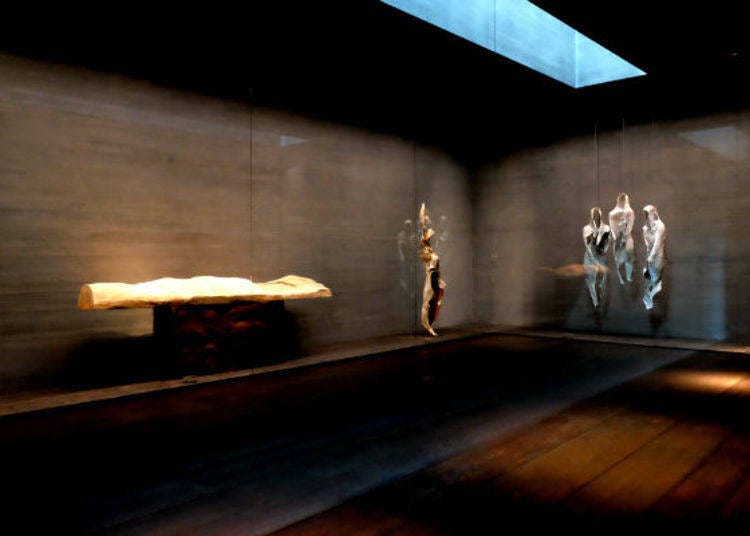
With the spotlights on the artwork in a dim room, it seems as though the pieces are floating. Also since it is dim, you don’t notice the people around you and can focus on the pieces even more.
What! A Tea Room Under Water!? Surprised by the Unconventional Tea Room
One thing you can’t forget about in the Raku Kichizaemon Wing is the tea room. Like the main wing, this was designed by Mr. Raku.
A normal tea rooms are built in a small building separate from the main house. Most people will probably imagine a very “Wa” (Japanese) and simple style. However Mr. Raku’s tea room is something different, he has condensed all his passion for tea ceremony and his creativity in this one and only tea room.
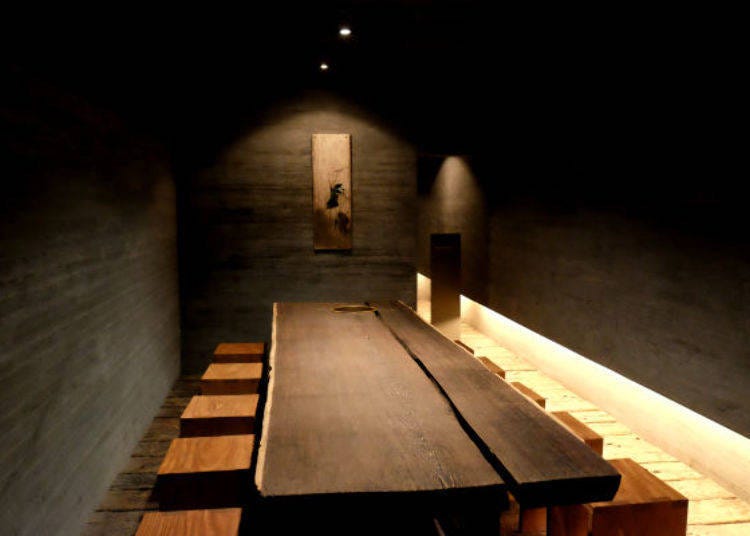
The first place you enter is the waiting area for guests, also called yoritsuki in tea ceremony terms.
If there wasn’t a hanging scroll on wall, you wouldn’t think that this room was related to tea ceremony. Also take a look around: the wall is made from undressed concrete and the floor is made from railroad ties. You can imagine how excited the guests must be when seeing this unique design by Mr. Raku.
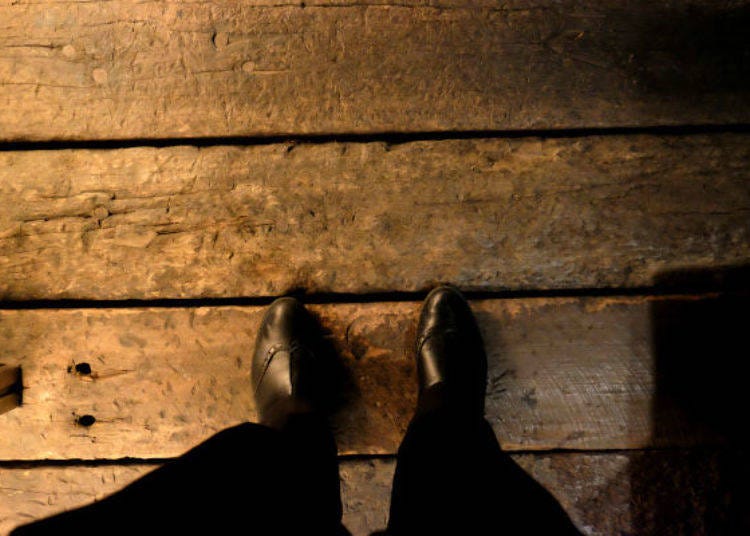
The next area you enter is koshikake machiai. This is the area where you wait for the host before entering the tea room. It is a brighter than the yoritsuki—that is because you are outdoors and can see the sky.
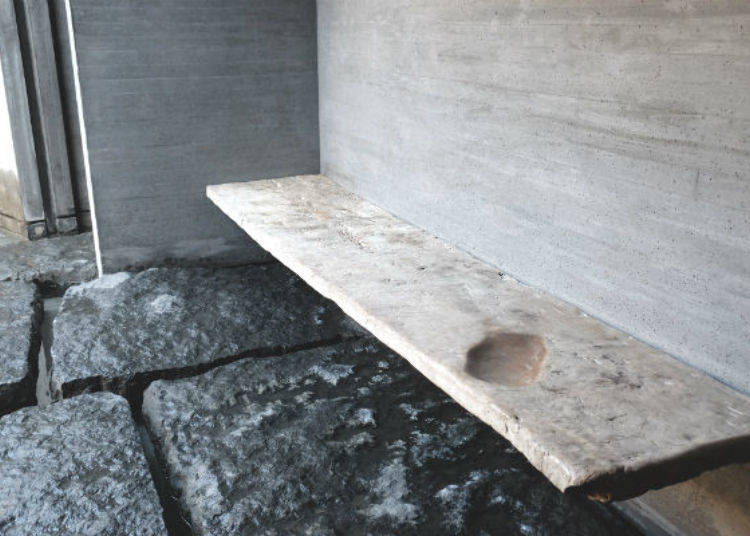
This area called Mizuroji is right below the water garden. A section of the water garden has been cut out in a circle and the concrete wall separating the water garden has a device to let in some water. The sound of the water dripping down the wall gives a very cozy sound. The wall, water and blue sky will be sure to give you a fresh feeling.
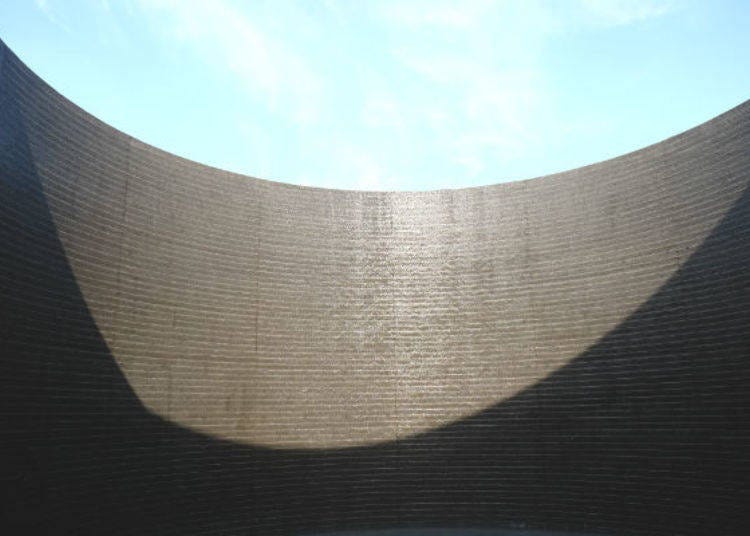
To the tea room koma (small room), Banda-an.
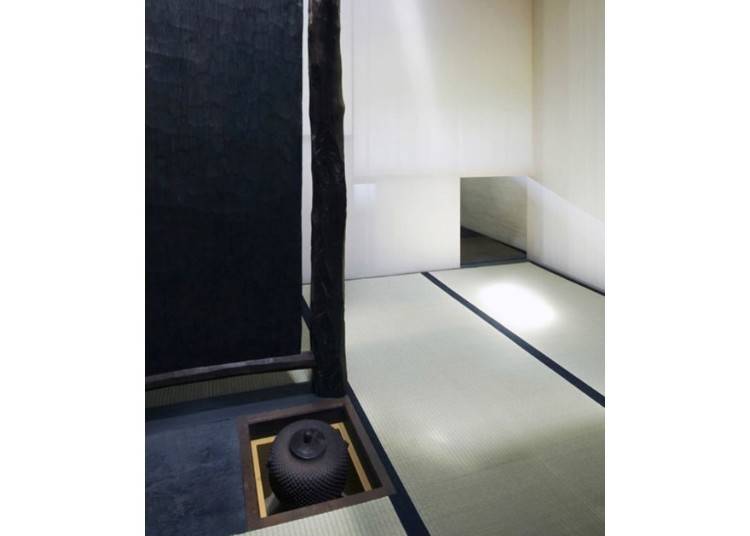
The tea room itself if very simple, however they use material from Japan and overseas to create something unique, such as using susudake (soot-colored bamboo) from a deconstructed old home for the ceiling and old materials from Bali for the alcove post.
The room also uses Echizen washi (Japanese paper) as a screen for the tea room window, which changes color with the light. For example during the day when the sunlight reflects off the reeds and cattails, it imparts a green reflection on the Echizen washi. With the setting sun in the evening the light will turn orange and so will the washi.
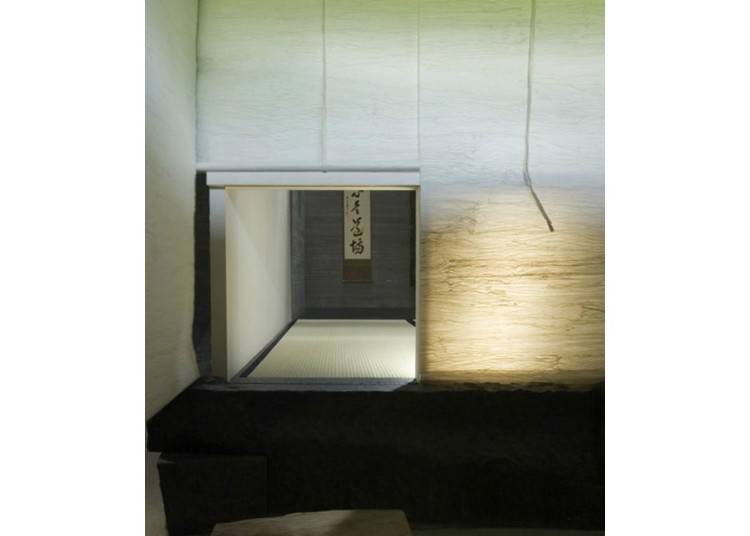
By using washi and natural light, this design by Mr. Raku allows guests to feel the change of time and season while being a tea room.
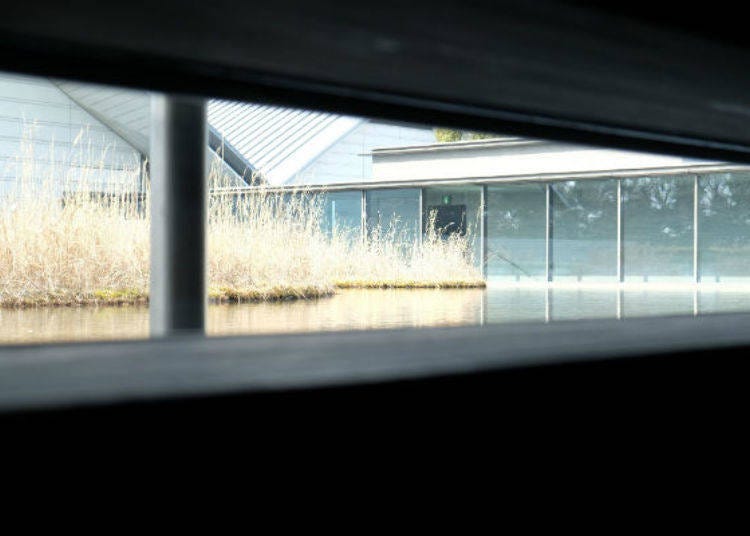
Ms. Matsuyama tells us “there is another space beyond the koma” and leads us to ----

A large space! This area, Fugyoken, is where you have usucha (weak powdered tea). Once you have a seat, your view will be aligned with the plants in the water garden. It was intentionally designed this way by Mr. Raku with the thought: “Sit at the same level as the water surface. People must live in the same level with nature, and keep the same line of sight.”
Interestingly, sitting here it does give a feeling like becoming one with nature.
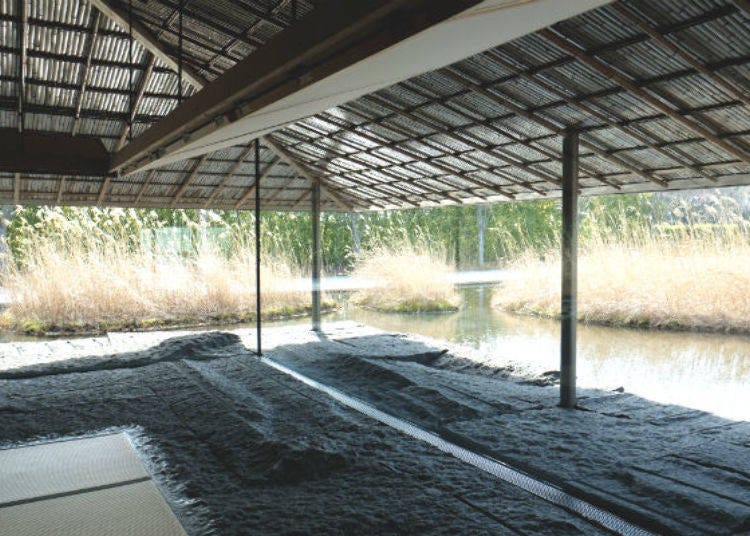
To visit this area you must sign up for the tea room guide tour Chashitsu Kengaku (open every Thursday to Sunday, 5 times a day, takes about 30 minutes per tour, 1,000 yen per person – tax included, museum entrance fee not included). Also it is possible to join tea ceremonies that are held on a regular basis. You can check for details on their official website.
An Art Spot that Touches the Senses of the Visitors by Combining Architecture, Nature and Art as One
The photogenic Sagawa Art Museum with an eye catching architecture, a landscape in harmony with nature, and domestic art work of the highest level. Going through the museum, it doesn’t just present art, it is a unique museum that touches your sense.
Other than their collection they also conduct events like the “Maho no Bijyutsukan II” (The Magic Museum II), an event where adults and children can experience light and art that you can touch. How about spending a day at Sagawa Art Museum for a chance to feel the splendor of nature and art?
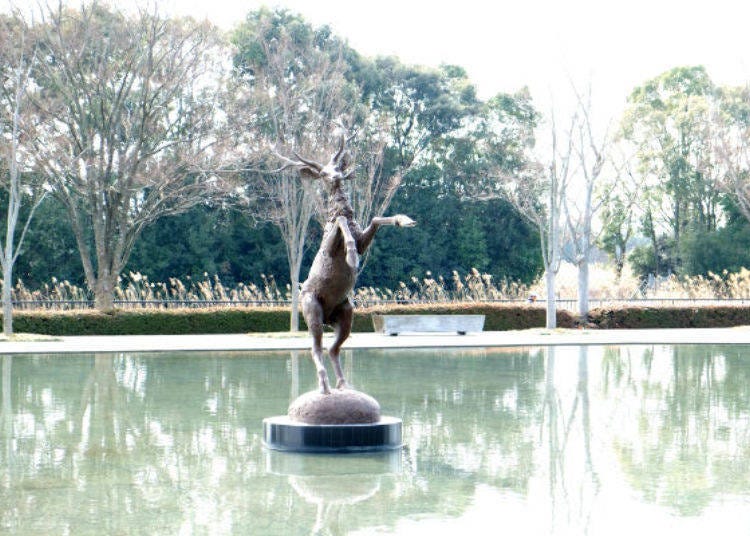
-
Sagawa Art Museum佐川美術館
- Address 2891 Kitagawa, Mizuh-cho, Moriyama-shi, Shiga
- Phone Number 077-585-7800
Hours: 9:30 AM – 5:00 PM (Last admission 4:30 PM)
Closed: Monday (If the Monday falls on a public holiday, the museum will be closed the following day), New Year holiday period, closed during changeover of exhibitions
Entrance Fee: Adults 1,000 yen, high school – university students 600 yen (tax included)
- Area
- Category
*Prices and options mentioned are subject to change.
*Unless stated otherwise, all prices include tax.
Popular Tours & Activitiess
Recommended places for you
-

Kanzenkoshitsuyakinikutabehodai Gyugyu Paradise Sannomiya
Yakiniku
Kobe, Sannomiya, Kitano
-

ISHIDAYA Hanare
Yakiniku
Kobe, Sannomiya, Kitano
-
Goods

Yoshida Gennojo-Roho Kyoto Buddhist Altars
Gift Shops
Nijo Castle, Kyoto Imperial Palace
-

To-ji Temple
Temples
Kyoto Station, To-ji Temple
-

Kambei Sannomiyahonten
Yakiniku
Kobe, Sannomiya, Kitano
-

Jukuseiniku-to Namamottsuarera Nikubaru Italian Nikutaria Sannomiya
Izakaya
Kobe, Sannomiya, Kitano
-

New Way to Reach Koyasan! Ride Nankai's 'GRAN Tenku' for a Heavenly Journey
by: Guest Contributor
-

Best Things to Do and See Around Kyoto & Osaka in September: Events and Festivals in Kansai
-
Ad

Discover Timeless Beauty: Kimono-en, a Web Magazine Exploring the Spirit of Kimono
-

Everything You Need to Know About teamLab Biovortex Kyoto (2025 Insider Guide)
by: Wemmy Chau
-
Ad

Experiencing Manga as Culture, Not Just Reading It: Expo 2025 with Rumiko Takahashi
-

Celebrate a Dreamy Barbapapa Christmas at JR Osaka Station's Twilight
by: Guest Contributor
Inspiration for Accommodations
-

Spacious Family Hotel in Namba: 20 Comfortable Stays for Family Fun
-

Charming Hotels to Enjoy the Spectacular Views of Arashiyama's Autumn Leaves from Your Room
-

Experience Stunning Views of Osaka Castle from Private Spaces: Top Hotels Near Osaka Castle
-

Recommended by Visitors! Arashiyama's Best-Rated Hotels
-

Family-Friendly Universal Studios Japan Hotel with Excellent Access
-

Enjoy a Comfortable Stay in Osaka! 10 Hotels with Convenient Airport Shuttle Services
-

Top 10 Recommended Hotels Near Namba Station with Great Access
-

Enjoy Night Views from Your Room! Recommended Hotels in Namba Area
-

6 Surprisingly Cheap Things in Japan
-

5 Amazing Kyoto Festivals You’ll Want to Experience During Your Next Trip
-

5 Must-Visit Nara Temples and Shrines: Discover the Timeless Beauty of Japan's Ancient Capital
by: WESTPLAN
-

Dining in Kyoto: Best Restaurants for Kaiseki, Sushi, Cafes & More
-

38 Best Things to Do in Kyoto: See, Eat, and Shop Your Way Through Japan's Cultural Capital
-

Osaka Travel Service Center: So Many Incredibly Convenient Services - in English!
by: WESTPLAN
- #best gourmet Osaka
- #things to do Osaka
- #what to do in kyoto
- #what to bring to japan
- #best gourmet Kyoto
- #new years in Osaka
- #what to buy in nanba
- #Visiting Osaka
- #onsen tattoo friendly arima
- #daiso
- #Visiting Kyoto
- #best japanese soft drinks
- #japanese fashion culture
- #japanese convenience store snacks
- #japanese nail trends












